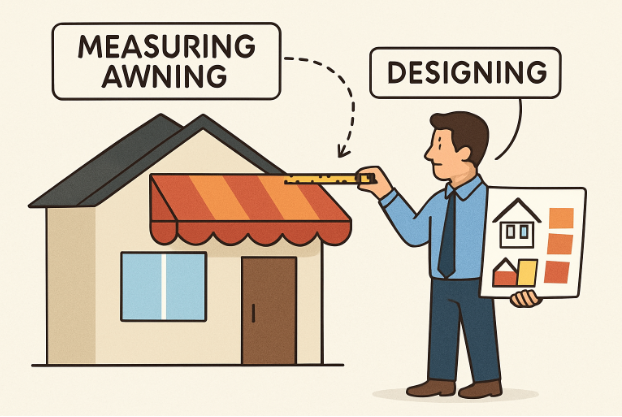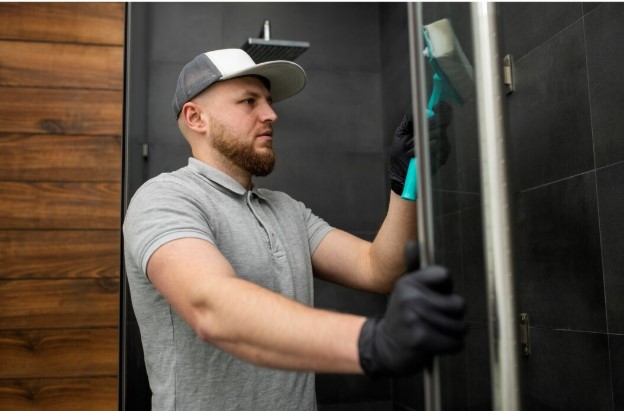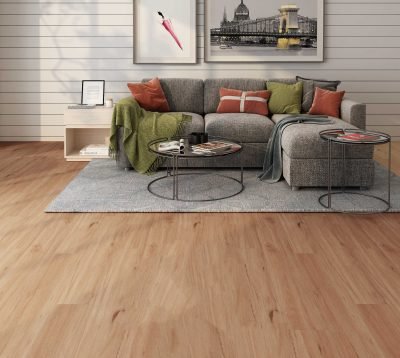
Key Takeaways
- Start with a clear plan that includes design preferences, site assessment, and budget alignment.
- Obtain the necessary permits and approvals to prevent delays and compliance issues.
- Select materials and features—such as sensor-controlled or motorized options—that align with your lifestyle and climate.
- Work with experienced installers to ensure precise mounting, safety, and functionality.
- Maintain your awning regularly by cleaning, making seasonal adjustments, and undergoing professional tune-ups to extend its lifespan.
Enhancing your outdoor living area with a custom awning introduces shade, style, and even potential utility bill savings. Before beginning your home improvement journey, it’s helpful to understand what each stage of awning installation involves. For anyone considering motorized or smart shading, sensor-controlled awnings Fairborn, OH, offer innovative solutions to increase comfort and maximize your investment.
The custom awning installation process is collaborative, involving your preferences, property requirements, and expert craftsmanship from local professionals. From design to completion, the process is designed to ensure your project remains on track, compliant, and tailored for long-lasting outdoor enjoyment.
Every successful installation begins with good planning and honest dialogue about your needs, home style, and available budget. Skipping this upfront work can create costly or inconvenient surprises down the road.
During the planning stage, reputable companies help you navigate choices in materials and mechanisms, so you achieve the perfect fit for your space and lifestyle—whether that means a stationary canopy or a fully automated system adapted to changing weather conditions.
Initial Consultation and Design
Your project starts with a thorough consultation and site assessment. Professionals visit your property to measure dimensions, assess sun and wind exposure, and note architectural elements that could impact your design options. This ensures your awning will be properly proportioned and capable of withstanding the local climate.
Key Aspects of This Phase
- Site Evaluation: Accurate measurements and a review of sun paths ensure the finished awning will deliver comfortable shade where and when you need it most.
- Design Selection: Here, you’ll browse material, color, and style samples to find a solution that enhances your home’s exterior or business façade.
- Budget Discussion: Installers guide you through available options, allowing you to balance cost efficiency with a creative vision.
Permitting and Compliance
Building codes and regulations help protect property owners by ensuring safety and neighborhood consistency. In most cases, awning installation requires approval from local authorities, particularly when attaching structures to buildings or modifying the exterior appearance. Professionals manage permit applications and handle communication with city officials, so you avoid mistakes or project delays.
Overlooking permits can result in financial penalties or forced removal of your new awning, making this an essential—if sometimes overlooked—step. Hiring specialists familiar with your municipality’s requirements provides peace of mind and ensures projects stay on schedule.
Fabrication and Customization
Once your plans and permits are finalized, skilled fabricators build your awning to order. Today’s awnings cater to both classic and high-tech homes, featuring a range of options that span traditional materials to retractable, sensor-enabled systems. Material choice and design dictate the fabrication timeline, which may range from a couple of weeks to over a month for especially complex builds.
- Material Selection: Options include marine-grade fabrics, powder-coated metals, and UV-resistant vinyl, each suited to different climates and exposures.
- Color and Pattern Choices: Select options that complement your home’s color palette or visibility requirements. This personal touch makes a significant difference in curb appeal.
- Additional Features: Consider upgrades such as remote-controlled retraction, integrated lighting, or wind sensors for added convenience and safety.
Installation Day
On the scheduled date, installation teams carefully prepare your property to prevent any disruption to landscaping or existing structures. The frame and fabric are securely fastened in accordance with building codes and manufacturer guidelines. For motorized awnings, technicians sync controls and test all safety features, ensuring seamless integration with your home or business systems.
What to Expect on Installation Day
- Site Preparation: Areas are cleared, tools set up, and safety precautions implemented.
- Professional Mounting: The frame is attached using specialty hardware to provide durability and weather resistance.
- Functionality Testing: Remote, sensor, or manual systems are tested to confirm smooth and silent operation.
The duration of installation depends on project scope, but most custom awnings are installed within a single day.
Post-Installation Inspection and Maintenance
A thorough final inspection ensures that everything—brackets, fabric, and automated functions—is locked in place and operating correctly. Quality installers also brief you on care and maintenance, so your investment stays looking new for years:
- Routine Cleaning: Gently wash surfaces to prevent the buildup of pollen, leaves, and dust. This preserves color and fabric life.
- Seasonal Adjustments: Retract awnings during storms, snow, or high winds to extend mechanical lifespan and protect from damage.
- Professional Tune-Ups: Regular checks for hardware tightness and operational smoothness are recommended, especially for motorized features.
Guidance on cleaning products and seasonal storage is often included in your post-installation packet.
Final Thoughts
Investing in a custom awning is an effective way to transform your outdoor space, add value to your property, and introduce stylish shade. With careful planning and an understanding of each stage—from consultation and compliance to installation and maintenance—you’re set up for years of comfortable outdoor living. Partnering with established professionals enables you to make informed choices for your home while minimizing hassle, delays, and unexpected expenses.






